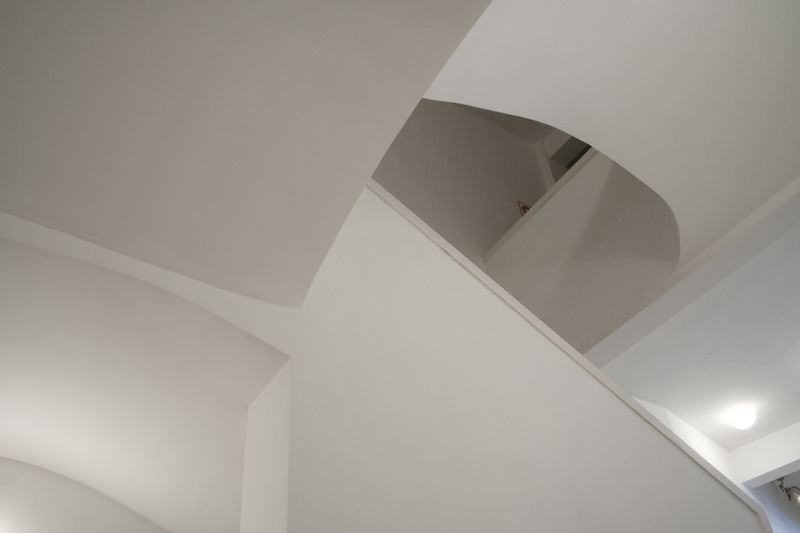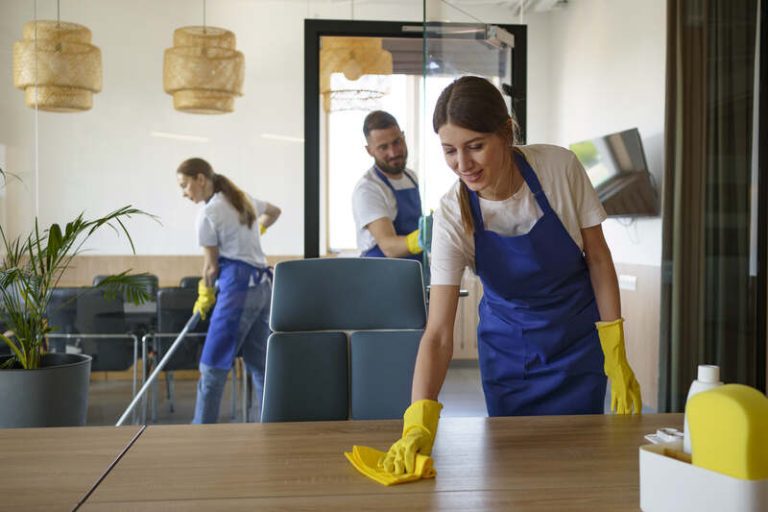Ceilings can accumulate dust, dirt, and grime over time. Therefore, ensuring that you understand how to clean ceiling is important.
Today, we will provide tips and guidelines on how to clean ceilings effectively. From gathering supplies to using various cleaning methods such as vacuum cleaners, microfibre cloths and dusters, we cover everything you need to know.
Discover the best ways to keep your ceiling looking clean in this article!
Preparation on How To Clean Ceiling
Before you start the process of cleaning your ceiling, it’s essential to gather the required supplies and protect the surrounding area to ensure an efficient and mess-free cleaning session.
a. Gather Supplies
To effectively clean your ceilings, gather supplies such as a vacuum, cleaning solution, and a Magic Eraser to tackle different types of dirt and stains.
Regarding vacuuming, ensure you have an extension wand or a ceiling fan attachment to reach high areas. A good quality cleaning solution suitable for your ceiling material is essential for a thorough cleaning without damaging the surface.
Don’t forget about protective gear like gloves and goggles if you are using harsh chemicals. Having a sturdy ladder is crucial for reaching high ceilings safely. Magic Erasers are great for removing scuff marks and stubborn stains without leaving residue behind.
b. Protect the Area
Protecting the area is crucial before starting to clean your ceilings, as it involves covering walls, floors, and furniture to prevent any cleaning solutions or dust from causing damage.
To safeguard your walls, begin by applying painter’s tape along the edges to create a protective barrier against drips or splatters. Lay down plastic sheets or drop cloths on the floor to catch any debris or spills that may occur during the cleaning process. Use old sheets or blankets to cover furniture and delicate surfaces, ensuring they are shielded from any potential harm. Taking these preventative measures not only preserves the cleanliness of your space but also minimises the need for additional maintenance tasks post-cleaning.
How To Clean Ceiling Effectively?
There are several effective methods for cleaning ceilings, each suited for different types of ceilings and levels of dirt, such as using a hoover, a microfibre cloth, or a duster.
a. Using a Vacuum
Using a vacuum cleaner is an effective way to remove dust and cobwebs from ceilings, especially in commercial areas where cleanliness is paramount.
Regarding cleaning ceilings, choosing the right attachments for your vacuum cleaner is crucial. Attachments like the crevice tool or the ceiling fan brush can make the job much easier.
To effectively clean ceilings, start by attaching the appropriate tool and adjusting the suction power to prevent any damage. Carefully manoeuvre the vacuum cleaner in gentle, sweeping motions to capture dust and cobwebs without scattering them.
One of the key benefits of using a vacuum cleaner for ceiling cleaning is its efficiency in reaching high and narrow spaces that are challenging to clean with traditional methods. This method not only saves time but also ensures a thorough and dust-free cleaning process, promoting a healthier indoor environment.
b. Using a Microfiber Cloth
A microfibre cloth, combined with a mild cleaning solution, is excellent for wiping away stains and dirt from ceilings without damaging the paint or texture.
To start the cleaning process, begin by dusting the ceiling with a dry microfibre cloth to remove any loose debris. Next, create a cleaning solution by mixing warm water with a small amount of gentle dish soap. Dip the microfibre cloth into the solution, making sure it is not overly saturated. Gently wring out excess water before wiping the ceiling in a circular motion. The microfibre cloth’s ultra-fine fibres attract and trap dust and grime effectively.
One of the key advantages of using a microfibre cloth is its ability to clean without leaving streaks or lint behind, ensuring a spotless finish. Microfibre cloths are reusable and machine washable, making them an eco-friendly and cost-effective cleaning option.
c. Using a Duster
A duster is a convenient tool for quickly removing dust and cobwebs from ceilings, making it suitable for regular maintenance in commercial areas.
Regarding selecting the right type of duster for your ceiling cleaning needs, consider factors like the material of the duster, its length, and its ability to attract and hold onto dust particles. Microfibre dusters are popular for their ability to trap dust effectively without spreading it around. Extension dusters with adjustable handles can help reach high ceilings or awkward corners with ease.
To efficiently clean high or hard-to-access areas, it’s advisable to use dusters with bendy heads or telescopic poles. These features allow you to adjust the duster’s angle to reach corners and crevices without straining yourself.
To maintain consistently clean ceilings, aim to dust them at least once a week, or more frequently if you notice a build-up of dust or cobwebs. Regular dusting not only keeps the area looking presentable but also helps improve indoor air quality by reducing dust accumulation.
Tips and Tricks on How To Clean Ceiling
Cleaning ceilings in commercial areas requires specific tips and tricks to ensure efficiency and safety, such as using a ladder or scaffolding and opting for a gentle cleaning solution.
a. Use a Ladder or Scaffolding
Using a ladder or scaffolding is essential for safely reaching high ceilings, especially in commercial areas where ceiling heights can vary significantly.
Safety should always be the top priority when working at heights. Proper equipment and techniques are crucial to prevent accidents.
When choosing between ladders and scaffolding, it’s important to consider the task at hand. For instance, if you need to work on an uneven surface or require a larger workspace, scaffolding might be the better option. Ladders are more portable and versatile for quick tasks or areas with limited space.
Whichever you choose, always ensure that the equipment is stable and secure before climbing. Anchoring the ladder correctly and using scaffold ties for stability are key safety measures.
By investing in these tools, you not only enhance efficiency but also reduce the risk of injuries or falls.
b. Use a Mild Cleaning Solution
When dealing with stains on ceilings, it is crucial to use a mild cleaning solution to avoid damaging the paint or the ceiling material.
One effective and safe option for cleaning ceilings is a mixture of diluted dish soap and warm water. This gentle solution can help break down stains without causing any harm.
If you prefer a more natural approach, white vinegar diluted with water is another excellent choice. It has mild acidic properties that can tackle stains effectively.
To apply these solutions, use a soft sponge or cloth and gently dab at the stained area. Avoid rubbing vigorously to prevent any damage.
Remember, before tackling the entire stain, always test the chosen cleaning solution on a small, inconspicuous area of the ceiling to ensure it doesn’t cause any adverse effects.
c. Work in Sections
To ensure a thorough cleaning of the ceiling, work in sections, focusing on one area at a time to avoid missing spots and to clean efficiently.
Start by dividing the ceiling into manageable parts, such as quarters or halves, depending on the size of the area. This approach allows you to concentrate on each section with precision, ensuring a deep clean. Use a sturdy ladder for higher ceilings and position it securely. Begin by dusting the section with a microfibre cloth or a duster to remove loose dirt and cobwebs. For textured ceilings, a vacuum cleaner with a soft brush attachment can be effective.
d. Clean Regularly
Regular cleaning of ceilings is essential to prevent the build-up of dust and stains, ensuring a consistently clean and pleasant environment in commercial spaces.
Establishing a routine for ceiling maintenance not only enhances the appearance of a space but also contributes to the overall hygiene and well-being of occupants. Depending on factors like location and foot traffic, ceilings should typically be cleaned every 6-12 months to keep them looking fresh. By adhering to a proper cleaning schedule, businesses can avoid the accumulation of grime, mould, or other contaminants which can deteriorate the indoor air quality over time. Regular maintenance also extends the lifespan of the ceiling materials and avoids more costly deep cleaning or restoration procedures in the future.
Common Mistakes to Avoid on How To Clean Ceiling
While cleaning ceilings, certain common mistakes can be easily avoided to ensure the process is effective and safe, such as avoiding strong chemicals and ensuring the area is protected.
a. Using Harsh Chemicals
Using harsh chemicals on ceilings can cause significant damage to the paint and material; therefore, it is crucial to opt for gentler cleaning products.
Harsh chemicals, such as bleach or ammonia-based cleaners, can strip the paint off the ceiling surface, leading to discolouration and potential degradation of the material underneath. Strong chemicals may release harmful fumes that can be hazardous to breathe in, especially in poorly ventilated areas.
Opting for mild and natural cleaning alternatives can effectively clean ceilings without risking damage. White vinegar diluted with water, baking soda paste, or mild dish soap solutions are excellent choices that are gentle on surfaces while still being effective in removing dirt and stains.
b. Not Protecting the Area
Failing to protect the area before starting the cleaning process can result in unintended damage to furniture, floors, and walls, making the task more challenging.
When preparing to clean the ceiling area, it is crucial to take precautions to safeguard your surroundings. Covering furniture with plastic sheets or old blankets can prevent dust or debris from settling on them. A dust sheet or tarpaulin on the floor will catch any particles that fall during the cleaning process, ensuring your flooring remains unscathed. Masking off walls with masking tape can prevent accidental splashes of cleaning solutions from leaving marks. By taking these simple steps, you can avoid unnecessary damage and streamline your cleaning workflow.
c. Not Cleaning Regularly
Neglecting to clean ceilings regularly can lead to dust build-up and stains that are harder to remove, impacting the overall cleanliness and air quality of the space.
Over time, this accumulation of dust and grime not only affects the aesthetic appeal of the room but also poses potential health risks for the occupants. In environments prone to humidity, such as kitchens or bathrooms, a lack of ceiling cleaning can result in mould and mildew growth, presenting a more significant challenge to eradicate.
To maintain a healthy living or working environment, it is recommended to clean ceilings at least once every three to six months, depending on the level of activity and dust accumulation in the space. Regular cleaning routines reduce the likelihood of extensive scrubbing or costly restoration efforts in the future.
This was the complete step-by-step guide on how to clean ceiling along with tips and tricks to some common mistakes that should be avoided.
When it comes to maintaining the cleanliness of your restaurant, ensuring your ceilings are spotless is crucial. Professional commercial cleaning services from TEKA Cleaning are essential for tackling this often-overlooked area effectively.
Utilising our specialised techniques and equipment, TEKA Cleaning ensures your restaurant’s ceilings are thoroughly cleaned, preventing the accumulation of grime and ensuring a pristine environment. A clean ceiling not only enhances the overall appearance of your establishment but also contributes to a healthier atmosphere for both staff and patrons.
Don’t risk the reputation and hygiene of your restaurant by neglecting this important task. Contact TEKA Cleaning today at 01233 751 544 to schedule your commercial ceiling cleaning service. Ensure your restaurant remains spotless and inviting for all who enter. Act now to experience the difference professional cleaning can make.
Read also:










